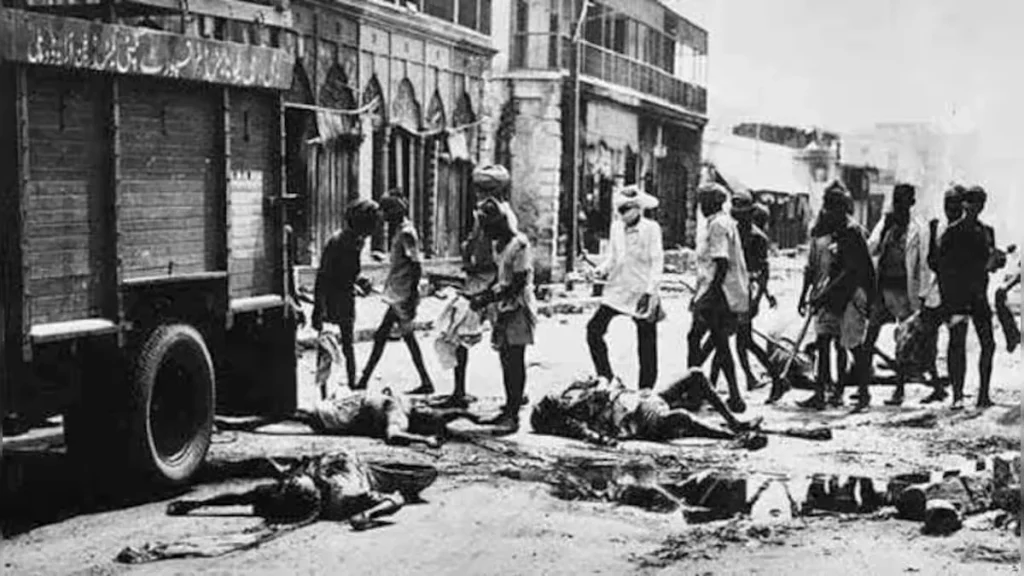Picture this: November 5, 1947. A small stream of buses winds through the dusty roads of Jammu, packed with over 5,000 desperate souls, families who believed they were being transported to safety in Pakistan. They clutched their meager belongings, their children huddled close, their hope embodied in a single promise of salvation. What they didn’t know was that they were boarding buses of death. Instead of reaching Sialkot across the border, these convoys were redirected toward Samba and Mawa, villages that would become watering holes for a calculated slaughter that has been erased from history books for 78 years.
This is the story of the Jammu Massacre of 1947, a catastrophe so devastating that it rivals the largest genocides of the modern era, yet remains so forgotten that most people have never heard of it.
When a State Planned Genocide
The backdrop is crucial to understanding this tragedy. Jammu had been a Muslim-majority region, with Muslims comprising 77.1 percent of the population in 1941. Yet Maharaja Hari Singh, the Hindu ruler, felt threatened. After World War II, thousands of demobilized soldiers from Poonch and Mirpur returned home, demanding justice and rejecting the Maharaja’s heavy taxation. They launched a no-tax campaign. Instead of dialogue, the Maharaja chose terror.
He systematically dismantled the Muslim military and police. Every Muslim officer was stripped of their rank. Every Muslim soldier was discharged. Weapons surrendered by Muslims mysteriously appeared in the hands of Hindu and Sikh extremists. In October 1947, RSS (Rashtriya Swayamsevak Sangh) cadres, Hindu nationalist militants, began infiltrating Jammu with army trucks, moving freely under curfews that were mysteriously enforced only against Muslims. This wasn’t communal violence. This was an orchestrated ethnic cleansing.
The Massacre Unfolds
In the first weeks of October, Muslim neighbourhoods were surrounded. The residents of Talab Khatikan and Ustad Mohalla, Muslim-majority localities in Jammu city, found themselves besieged. The water supply was cut off. Food was denied. Neighbours became attackers. By late October, the violence crescendoed into what survivor accounts describe as wholesale slaughter.
On November 5, the Maharaja’s administration made its final move: they announced that Muslims could be evacuated to Pakistan. Desperate families gathered at Police Lines, believing they were being given a lifeline. What followed was one of history’s most brutal deceptions.
One convoy carrying approximately 1,200 evacuees was stopped outside the city. Masked armed men emerged from the darkness. As one survivor told The Guardian, “People ran hither and thither, begging for mercy; mothers tried to shield their children; old men fell silently to their knees; men tried in vain to fight back.” Only about one-third escaped into nearby fields under the cover of darkness, sprinting toward the Pakistani border just miles away.
The Numbers That Haunt
The Times of London, in its August 10, 1948, report, estimated that 237,000 Muslims had “disappeared” from eastern Jammu province, adding that they were “systematically exterminated…by all the forces of the Dogra state, headed by the Maharaja in person and aided by Hindus and Sikhs.” British intelligence operatives reported that at least 20,000 were killed by the end of October alone. Official historians now estimate between 200,000 to 237,000 murdered.
The proof lies in the census. In 1941, Muslims represented 77.1 percent of Jammu and Kashmir’s population. By 1961, the first census after 1947, that figure had plummeted to 68.29 percent. Over 500,000 Muslims were either murdered or forced to flee as refugees. In 1941, Muslims comprised 40 percent of Jammu district alone; by 2011, they made up just 7 percent.
Why We Should Care Today
This isn’t ancient history. The Jammu Massacre remains unpunished, unacknowledged by mainstream Indian discourse, and deliberately omitted from textbooks. The United Nations demanded a plebiscite in 1948 (Resolution 47), promising Kashmiris the right to choose their own fate through a democratic vote. Seventy-eight years later, that vote has never occurred.
The massacre reveals a pattern: violence followed by demographic erasure, then historical erasure. The same machinery that cleansed Jammu of its Muslim population has operated in Kashmir for decades, just more quietly.
The Future Question
For Kashmiris on both sides of the Line of Control, 6th November is observed as Youm-e-Shohada-e-Jammu, a day of remembrance, not just for the dead, but for the denied right to self-determination. On the morning of 6th November 1947, a 17-year-old named Ved Bhasin witnessed skeletal remains piled in Ramnagar Rakh. He later described it as “littered with the dead bodies of Muslim Gujjar men, women, and children.” When he grew old, he asked: How does a nation heal when it refuses to acknowledge its wounds?
The Jammu Massacre serves as a mirror to the Kashmir conflict’s essence: not merely a territorial dispute, but a question of justice, memory, and human dignity. Until this foundational tragedy is recognized, investigated, and its perpetrators held accountable, Kashmir’s future remains shackled to its unresolved past.
Conclusion
As 6th November is commemorated each year as Youm-e-Shohada-e-Jammu, it stands as a solemn reminder of the countless lives lost and the injustices that continue to echo across generations. The day is not only about mourning the victims but also about reaffirming the call for recognition, truth, and justice, ensuring that the voices silenced in 1947 are never forgotten.
Also Read: Kashmir Black Day: Echoes of Resistance Across Generations



